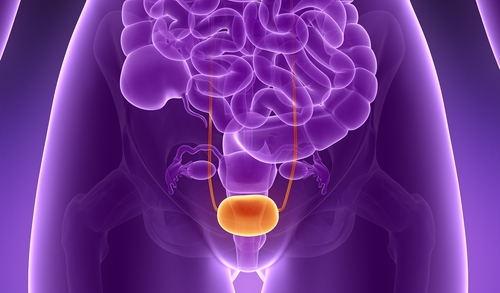The most common female incontinence treatment is a bladder sling, a device that provides support to the bladder neck. Bladder sling surgery is FDA-approved and has been used in the U.S. for more than a decade. This procedure is generally recommended for women who have had little or no success with less-invasive pelvic organ prolapse treatments such Kegel exercises.
Bladder Sling Types
Bladder slings are generally safe and effective, with a low risk of complications. Midurethral bladder slings are the most common and are made of polypropylene mesh. There are a few different types:
- Retropubic Midurethral Slings: Retropubic refers to how the sling is put in place: It is inserted through the midline joint of the pelvis, an area known as the retropubic space. These slings are made of polypropylene mesh tape and require no internal stitches. Instead, they're held in place by friction between the mesh and the surrounding urethral tissue canals—eventually scar tissue develops to more permanently secure the sling and prevent movement. The procedure carries a risk of rare but serious complications, including erosion, pain, and infection.
-
Transobturator Sling Treatment (TOT): Trasobturator refers to how the sling is put in place: It is inserted through the two lower spaces in the pelvis, the obturator foramens. As with the retropubic procedure, no stitches are required to hold the sling in place and the needle site incisions are sealed with skin glue. Extensive studies have shown both the the retropubic and transobturator slings to be similarly effective (about 75% of cases are cured with either procedure), but transobturator slings carry a lower risk of damage to the urethra or bladder and a greater risk of complications in the groin area.
- Mini Sling (single-incision slings): This smaller version of the urethral sling can be inserted with a single incision to the vagina. This new type of sling was developed to achieve the same results as the transobturator tape or tension free slings, but with fewer post operation complications. But to date, according to a 2011 study in European Urology, the mini sling has lower short-term cure rates and higher re-operation rates compared to the older mid-urethral slings.
-
Bladder Neck Slings: These slings, also known as proximal urethral slings, can be made from synthetic mesh or a patient's own tissue (taken from the lower abdominal muscles). In this procedure, the sling is placed toward the top of the urethra at the same level as the bladder neck. The surgery usually requires general anesthesia and may require an overnight hospital stay.
Bladder Sling Risks
Serious bladder sling complications are not common. In some cases, slings cannot cure urinary incontinence. And when stress incontinence is not the only source of leakage, additional medications may be required after surgery to completely halt incontinence. Urinary tract complications that can arise from the surgery include: difficulty urinating, development of overactive bladder, difficulty emptying the bladder completely, pain during intercourse, urinary tract infection, and pelvic organ prolapse.
Additionally, pregnancy can disrupt the surgically repaired tissue, so women of childbearing age or younger may want to consider other options until they are done having children.
References
1. Chen Z, Chen Y, Ye Z, et al. Comparison of three kinds of mid-urethral slings for surgical treatment of female stress urinary incontinence. Urologia. January 2010;77(1):37-42.
2. Moore RD, Gamble K, Miklos JR. Tension-free vaginal tape sling for recurrent stress incontinence after transobturator tape sling failure. Int Urogynccol J ; 2007(18):309-313.
3. Rechberger T, Futyma K, Jankiewicz K, Adamiak A, Skorupski P. The Clinical Effectiveness of Retropubic (IVS-02) and Transobturator (IVS-04) Midurethral Slings: Randomized Trial. European Urology. July 2009;56(1):24-30.
4. Albo M, Richter H, Varner R, et al. Burch Colposuspension versus Fascial Sling to Reduce Urinary Stress Incontinence. New England Journal Of Medicine. May 24, 2007;356(21):2143-2155.
5. Abdel-Fattah M, Ford JA, Lim CP, Madhuvrata P. Single-incision mini-slings versus standard midurethral slings in surgical management of female stress urinary incontinence: a meta-analysis of effectiveness and complications. European Urology. Sept. 2011; 60(3):468-80.


